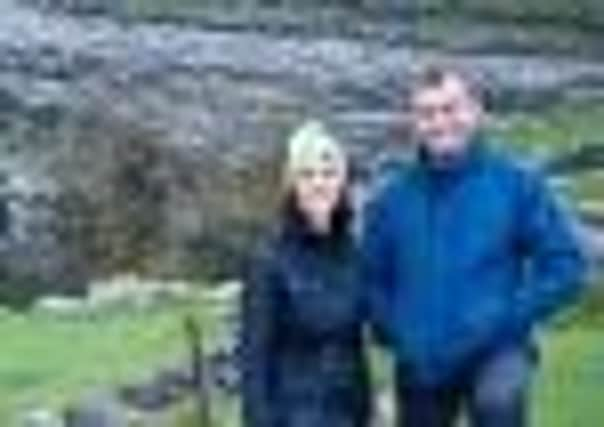Malcolm Barker: History lessons we can learn by looking around


This soon cooled as our clumsy attempts at entente were rebuffed, and the mademoiselles made off to dance at the Spa, no doubt hoping to meet les vrai gentilhommes Anglais.
These memories of an organised educational visit were aroused by news that the Department of Education had conjured up £2.7m to hand to English Heritage “to help schools and children understand their local history and how it relates to the national story”, possibly through school excursions.
Advertisement
Hide AdAdvertisement
Hide AdEver an enthusiast, Simon Turley, chief executive of English Heritage, declared that their Heritage Schools Initiative will bring history to life both in the classroom and out of it”, a praiseworthy aim. The question is how it can be afforded.
Ahead of the Budget, the Chancellor of the Exchequer, George Osborne, has said that the Government had run out of money. Nothing much seems to have changed since 2010 when Liam Byrne, the former Chief Secretary to the Treasury, left his successor, David Laws, a note: “Dear Chief Secretary, I am afraid to tell you there is no money left.”
In such hard-pressed times, teachers may well consider that if the Department of Education has £2.7m to spare, it might more usefully be applied to helping failing schools, recruiting more staff, and titivating dingy classrooms. Also, the “Initiative” rouses the spectre of groups of children absenting themselves from their classrooms to be shepherded round Mr Turley’s collection of tumbledown castles and ruined monasteries by harassed teachers and parent-helpers. It would surely contradict attempts to dissuade parents from taking their children out of school in term-time.
Such objections do not diminish in any way the desirability of arousing children’s interest in local history. Michael Gove, the Education Secretary, was undoubtedly correct in his assertion that our rich island story is brought to life by seeing historical and heritage sites.
Advertisement
Hide AdAdvertisement
Hide AdMany parents used to undertake this task quite naturally. In my days at Whitby Grammar School, which ended in 1949, there was never any question of our avoiding lessons by climbing the 199 steps to view the Abbey ruins.
Instead, that was a family outing for the weekend, and one which combined nicely with a visit to the Parish Church of St Mary’s, where lessons can be learned from memorials. In the porch, a curious pagoda-like structure commemorates a local lifeboat disaster of 1861 in which all but one of the heroic crew were lost. There were also trips to Saltwick to see traces of alum workings, or Goathland for a stroll on the incline once traversed by the horse railway to Pickering opened in 1836. That was how we learned about our ancient town, where James Cook mastered seamanship, and the Scoresbys captained whalers destined for the Arctic.
Parents today should be encouraged to lead similar forays into their neighbourhoods. They would find the experience rewarding. In the West Riding, for example, in addition to an array of museums there is a multitude of wonders to behold, like the massive brickwork of the Dark Arches in Leeds, Sir Titus Salt’s glorious mill at Saltaire, Halifax’s Piece Hall, the Abbeydale Industrial Hamlet at Sheffield and the sinister old battlefield at Towton.
English Heritage already encourages holiday visits by offering cut-price admission to some of its properties, a scheme that could perhaps be extended by direct offers to schools.
Advertisement
Hide AdAdvertisement
Hide AdThe compelling power of television is already very much hitched to the heritage business. Yorkshire is subjected to regular rummaging, the latest foray being a visit by Julia Bradbury and Hugh Dennis for The Great British Countryside (BBC1). Predictably, they were down Gaping Ghyll and above Malham Cove on the limestone pavements, but an hour spent with them would certainly open young eyes to the county’s potential.
The best TV history lesson of recent times has come from the former Government Minister Michael Portillo, who used the simple device of following an old Bradshaw’s Guide to travel the country by train, pausing to see the sights and hear the stories.
That visit to Scarborough? It may not have been repeated, and we certainly did not go to France. Perhaps some of the visitors returned to their écoles with an incipient Yorkshire accent. That would never have done.
My personal legacy is the ability to spout chunks of Jean de la Fontaine’s poem Le Laboureur et ses Enfants. We had to learn it by heart, and it remains rock-like in the stream of consciousness. I use it to startle French waiters.